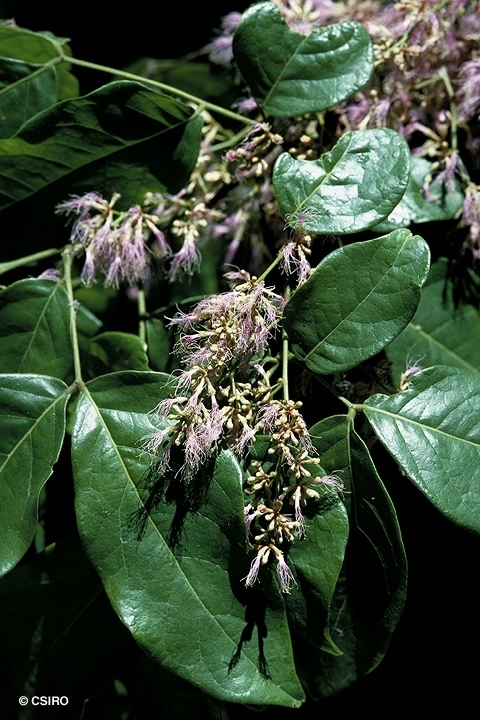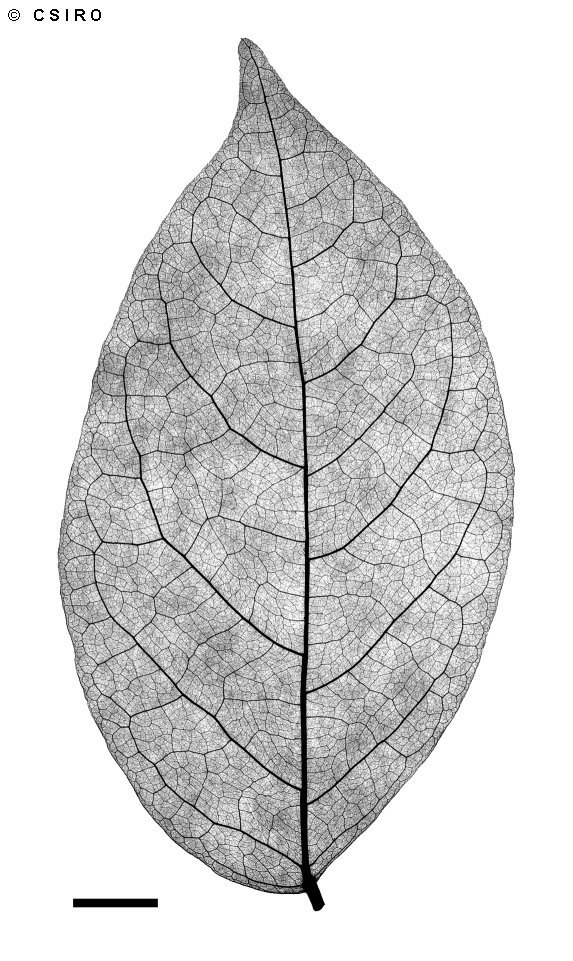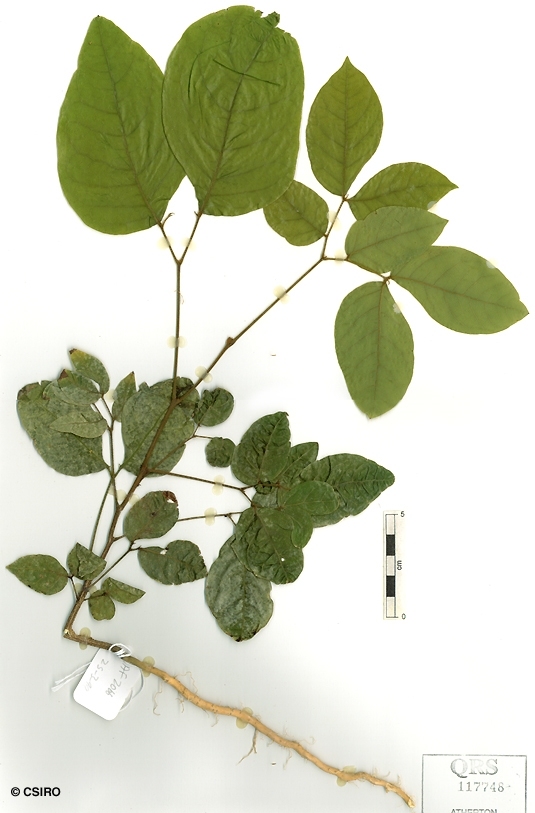Australian Tropical Rainforest Plants - Online edition
Archidendron hirsutum I.C.Nielsen





Nielsen, I.C. (1982) Nordic Journal of Botany 2: 482. Type: Cape York, Cook District, Qld, Nov. 1955, K. J. White 1147; holo: BRI; iso: BRI.
Cape Laceflower
Deciduous; leafless for a short period in September or October.
Leaflet stalks short, about 0.1-0.4 cm long, hairy. Younger leafy twigs and compound leaf axes clothed in brown or ginger hairs. A dome-shaped gland present near the mid point on the upper surface of the compound leaf petiole. Similar glands present on the secondary axes between the last 1 or 2 pairs of leaflets. Leaflet blades about 0.7-1.8 x 3.5-9.6 cm.
Flowers sessile. Peduncles about 2-4 mm long. Staminal filaments pink, about 5-10 mm long.
Fruits orange on the inner surface. Seeds about 10 x 8 mm.
First pair of leaves pinnate, each leaf with two leaflets. Seedlings hairy throughout, hairs erect, simple. Stipules recurved, about 1 mm long. At the tenth leaf stage: leaf bipinnate with 6 leaflets per compound leaf. Leaflet blades ovate to elliptic, apex acute to acuminate, base obtuse and oblique. Midrib raised on the upper surface of the leaflet blades. All aerial plant parts clothed in brown or ginger hairs. Compound leaf petiole and the two compound leaf secondary axes all terminate in a subulate or filiform process (appendage). Small cup-shaped glands present on the upper surface of the secondary axes near the point of attachment of the leaflet stalks. Similar glands present on the upper surface near the apex of the compound leaf petiole. Freshly broken roots emit an odour like that of shallots. Seed germination time 7 to 18 days.
Endemic to CYP. Altitudinal range from near sea level to 100 m. Grows in gallery forest and the drier, more seasonal rain forests.
A small tree with potential in tropical gardens. Flowers are pinkish.





